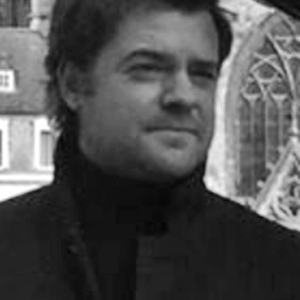Hungary – The Foundation for Historical and Social Research in Central and Eastern Europe, which is close to the Hungarian government, has just published a collective work dealing with the Soros empire in the former satellite countries of the USSR and the post-Soviet space. The Great Project traces the life of George Soros, a Hungarian emigrant of Jewish descent who left Hungary in 1947 and went on to forge a network of foundations that have played a leading role in many countries for decades.
Since the 2015 migration crisis, Viktor Orbán’s government has been loudly denouncing the activities and ideas of the Soros networks, and it is a communication strategy that the opposition never fails to mock and deride as proof that the coalition in power since 2010 is inclined towards conspiracy theories.
It is probably to respond to this accusation and to give some intellectual substance to the government’s communication strategy that The Great Project has been published, as the authors have endeavoured to deliver a sourced and argued work on the reality of the methods used by George Soros and his foundations.
This allows the reader to understand how, as early as 1984, Budapest was already at the strategic heart of the American-Hungarian billionaire’s actions in that part of Central Europe which was to switch to the Western camp in 1989–90. There is no doubt that the meticulous work of Soros and his men played a considerable role in that change, notably by helping – in particular financially – members of the democratic opposition and, more broadly, by playing on the Budapest intelligentsia’s taste for the West.
“In short, in the mid-1980s, largely thanks to George Soros, Hungary became the open channel from the Eastern Bloc to the West, through which economic-financial and political-cultural products would increasingly flow freely”, Márton Békés sums up in his chapter on the birth of the Soros empire.
In the same chapter, the author relates an anecdote according to which
at the very beginning of the 1990s Viktor Orbán refused financial support from George Soros during a meeting in the billionaire’s New York offices, on the 33rd floor of a tower overlooking Central Park.
This is a reminder that, contrary to what most observers think, the feud between the two men does not date back to 2015 or 2010, but began shortly after the 1989–90 regime change. Viktor Orbán refused to meet George Soros during his first term in office from 1998 to 2002, but received him at the very beginning of his second term, in November 2010, officially to discuss the Gypsy question.
The history of the Central European University (CEU) figures prominently in the book: founded in 1991 by George Soros in Prague, it moved to Budapest three years later, in 1994, following disputes with Czech Prime Minister Václav Klaus. Over time, it became the hub of the Sorosian presence in the region. What happened next is well known and is one of the high points of the tension between Viktor Orbán and George Soros: at the start of the 2019 academic year, the Budapest campus moved in part to Vienna after it lost its accreditation in Hungary, while the Open Society Foundations (OSF) had already moved their Central European headquarters from Budapest to Berlin in May 2018.
The Great Project reports on the amount of money George Soros has committed to developing his Central European University, which makes the reader realise that this institution is of utmost importance to the billionaire. For example, out of the $1 billion Soros spent on Central Europe between 1990 and 1993, $250 million was allocated to setting up the CEU. Another priority – which is in line with the first one – is Hungary. According to the daughter of Miklós Vásárhelyi, the Soros Foundation’s chairman between 1994 and 2001, the Soros Foundation spent $150 million in Hungary between 1984 and 2004. Some go so far as to talk about a personal Marshall Plan.
In the 1980s and 1990s, Hungary was the country in which George Soros had the greatest presence. He returned there for the first time in 1968, and from 1984 onwards he forged links at the highest level of the state, notably through György Aczél, the heavyweight on the Communist Party’s central committee in charge of culture. Thanks to such presence, by spotting members of the young generation with potential,
George Soros became one of those actively supporting the regime’s democratic opposition, and in that respect he was even a competitor to Mark Palmer, the U.S. ambassador to Budapest in place from 1986 to 1990, who is remembered for his active role in the fall of communism in Hungary.
Once the previously closed Hungarian society had opened up, George Soros continued his work while pointing at a new enemy: nationalism. In this context, Fidesz very quickly detached itself from the Soros network, refusing to take part in the 1991 Democratic Charter, while the SZDSZ (Alliance of Free Democrats) undoubtedly became the American businessman’s representative par excellence in Hungary, a fact that is very well sourced in the book.
An entire chapter is devoted to George Soros’ philosophical journey, which was heavily influenced by Karl Popper’s concept of open society. Reading Popper convinced Soros to take the side of a globalist and progressive ideology, which must be constantly set in motion to overcome closed societies, the latter necessarily leading to totalitarianism. Considering himself a businessman by default, falling short, in his own opinion, of the intellectual level required to have the privilege of dealing only with philosophy, he proudly defines himself as a speculator-philosopher and sees no contradiction in juggling with financial markets and what he calls philanthropy.
As Márton Békés notes,
Soros has the same approach to financial markets and politics. He takes advantage of unstable situations and moments of stress to make his best moves.
He is a master at the art of fishing in troubled waters. According to Mária Schmidt, director of the 21st Century Institute and head of the House of Terror, George Soros has a five-step method for achieving his goals: influencing intellectual circles, and later on parties and civil society, a destabilization phase using these tools of influence, stirring up street protests if necessary, potentially with the use of violence, and orchestrating a return to order.
This method reached new heights in the case of Ukraine, which is the subject matter of an entire chapter – the best in our opinion – written by András Kosztur. Indeed, it is undoubtedly in Ukraine that Soros’ art found its fullest expression. The man who sees himself as a statesman without a state, accepting the idea that his actions are interference in the internal affairs of foreign countries, went so far as to support nationalist movements and to place his men directly in the ministerial cabinets and parliamentary fractions in Kiev. The Ukraine of the last thirty years is the perfect place to understand the methods and ingenuity of George Soros and his networks.
The book’s authors also take us to Poland, the Czech Republic, Slovakia, Belarus, Moldova, Romania, Macedonia (where Soros has achieved great feats), Georgia, Armenia, Russia, Serbia, Albania and Central Asia – all regions where the Soros networks have made their mark in a more or less resounding fashion.
This is a fascinating work, carrying unlimited potential for debate, and it would certainly deserve to be translated in full.
—
A NAGY TERV – A SOROS-BIRODALOM KÖZÉP- ÉS KELET-EURÓPÁBAN, edited by Békés Márton, published by KKETTK Közalapítvány, 2021, 394 pages




